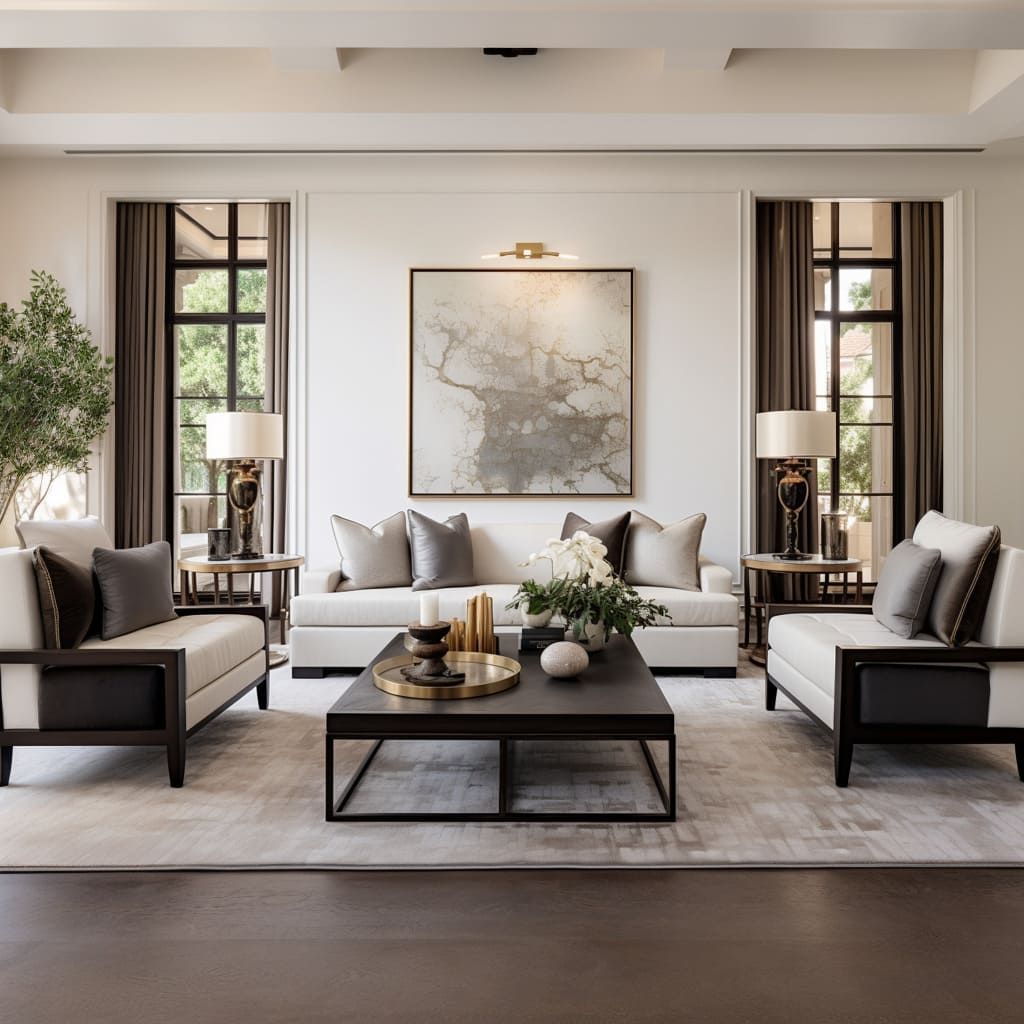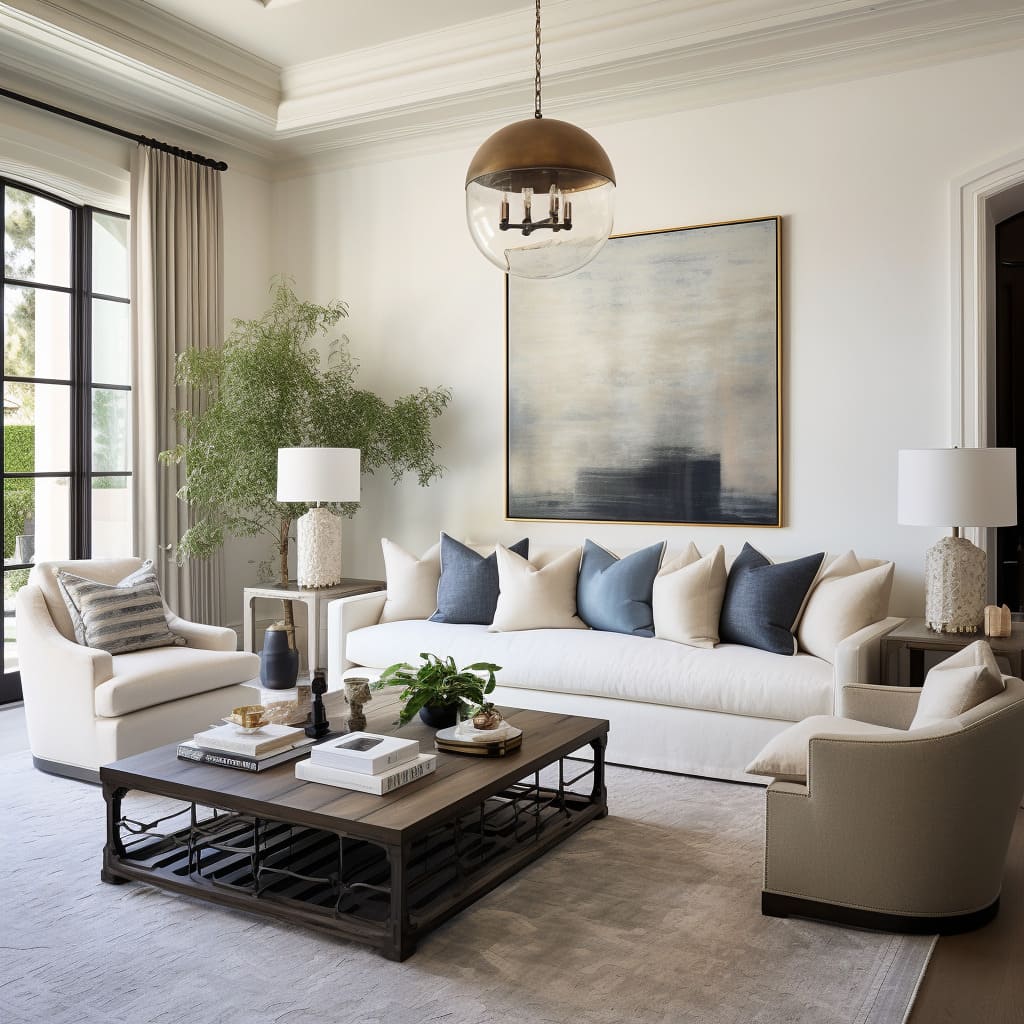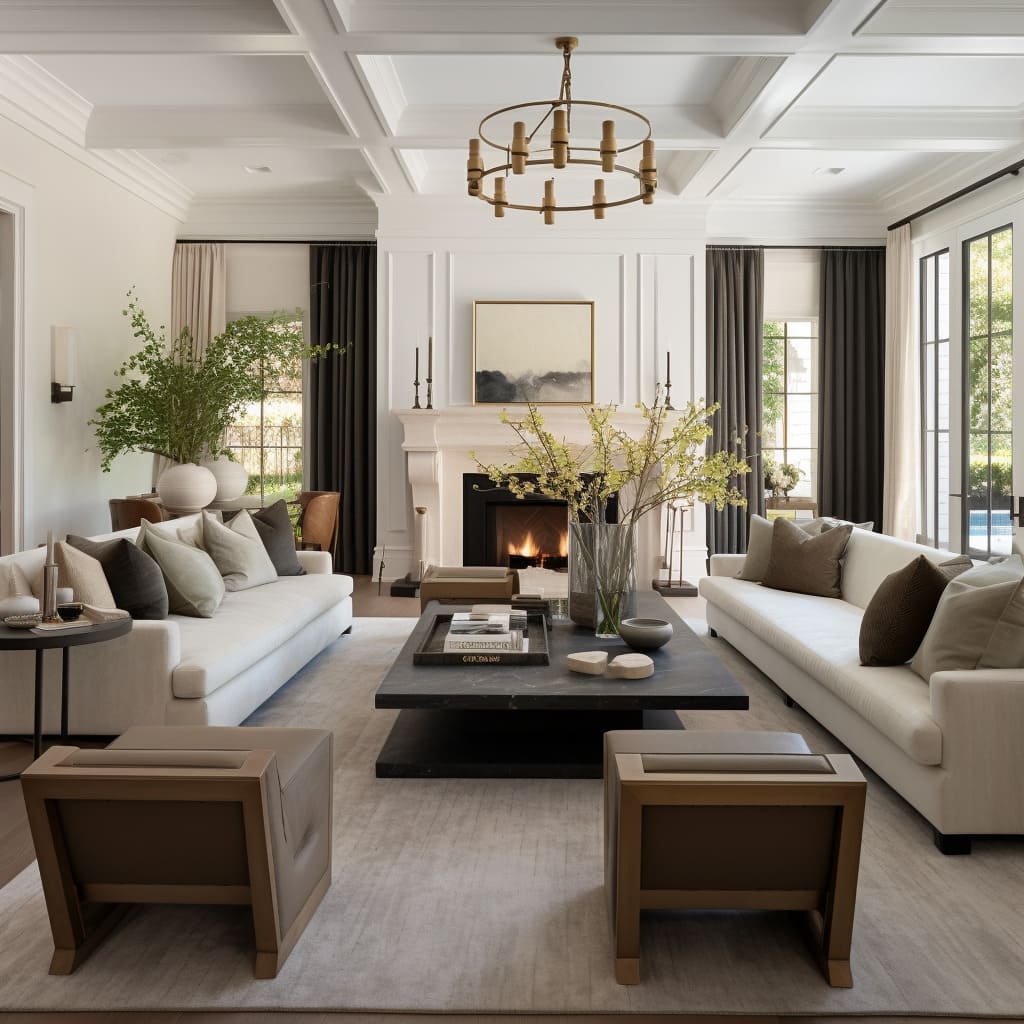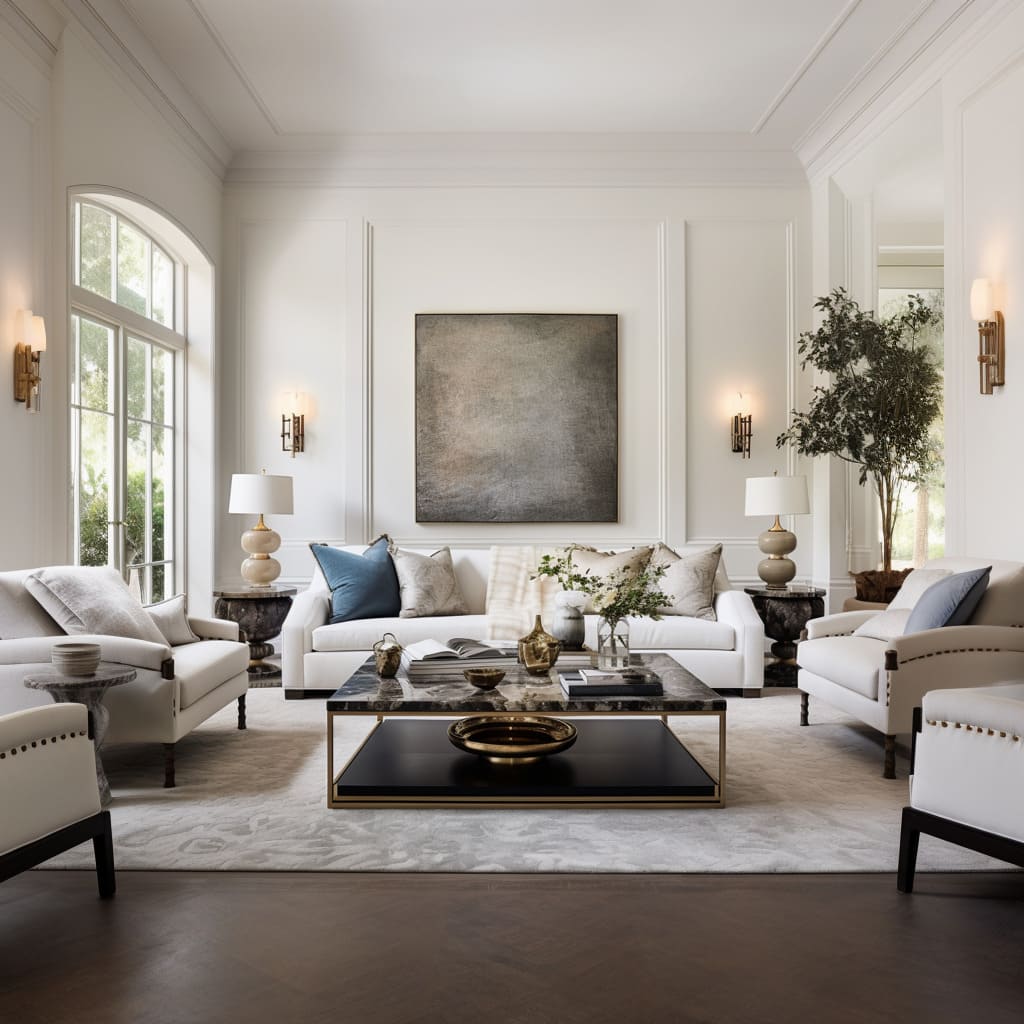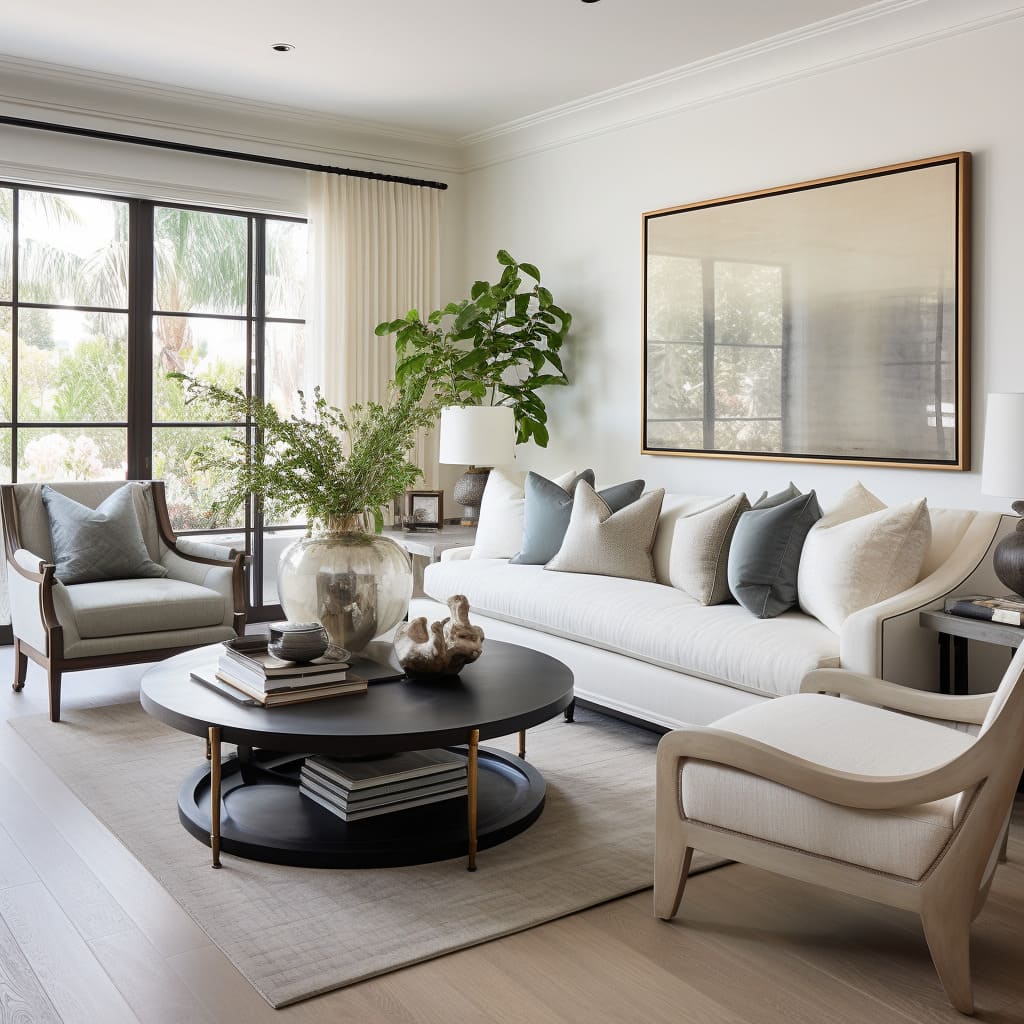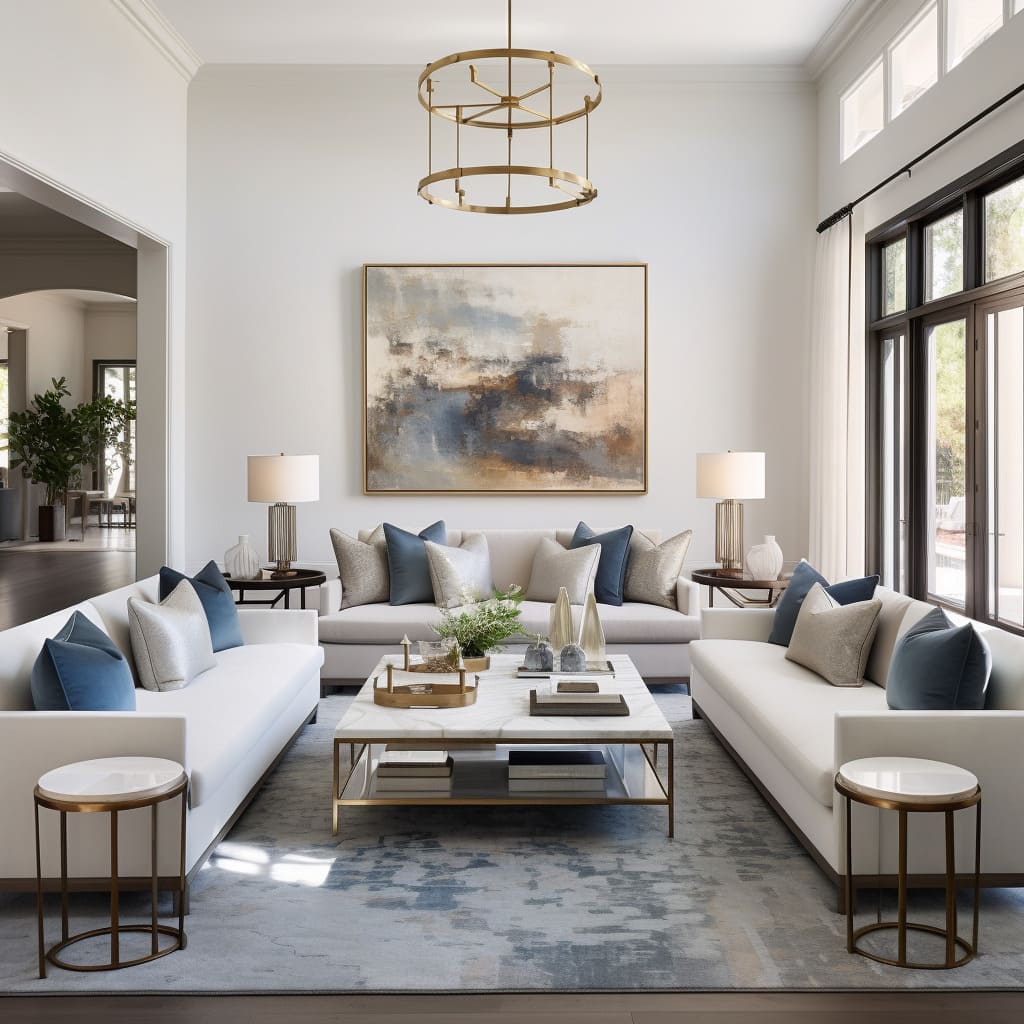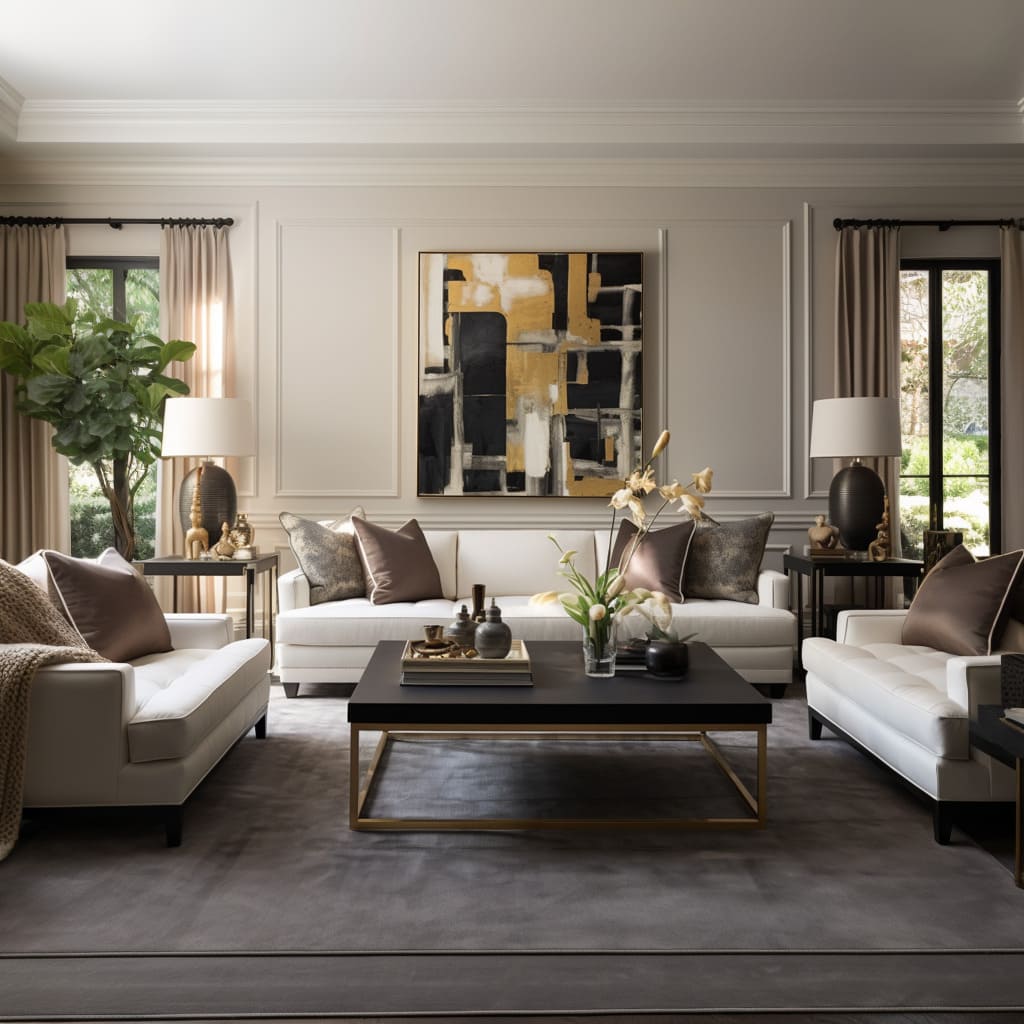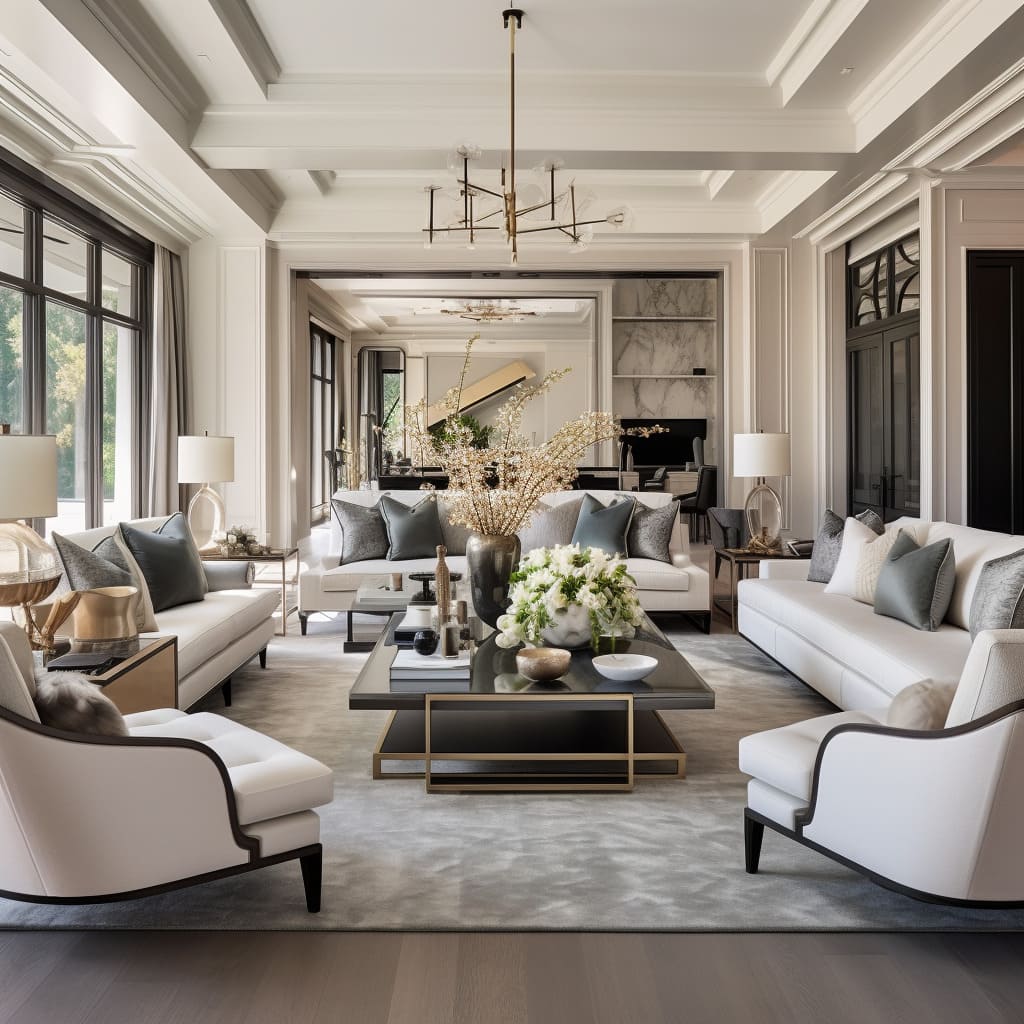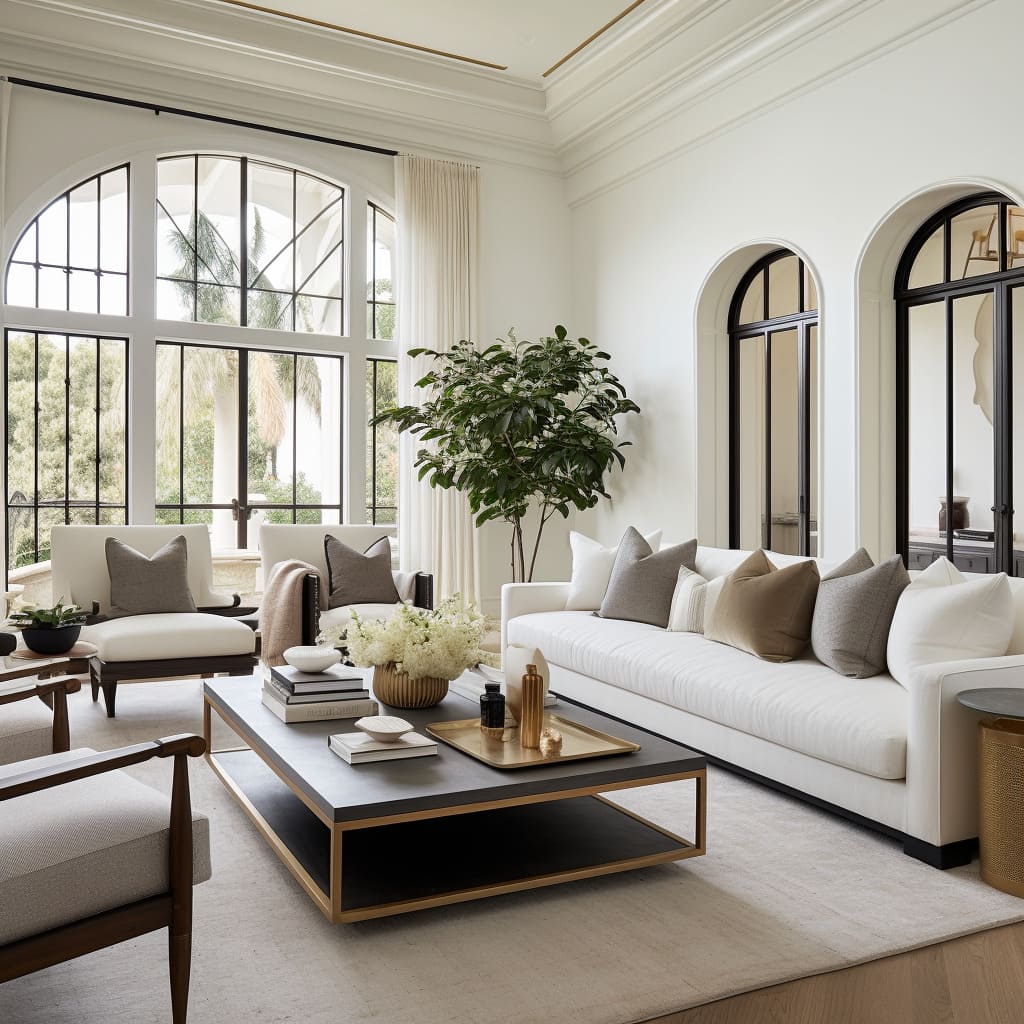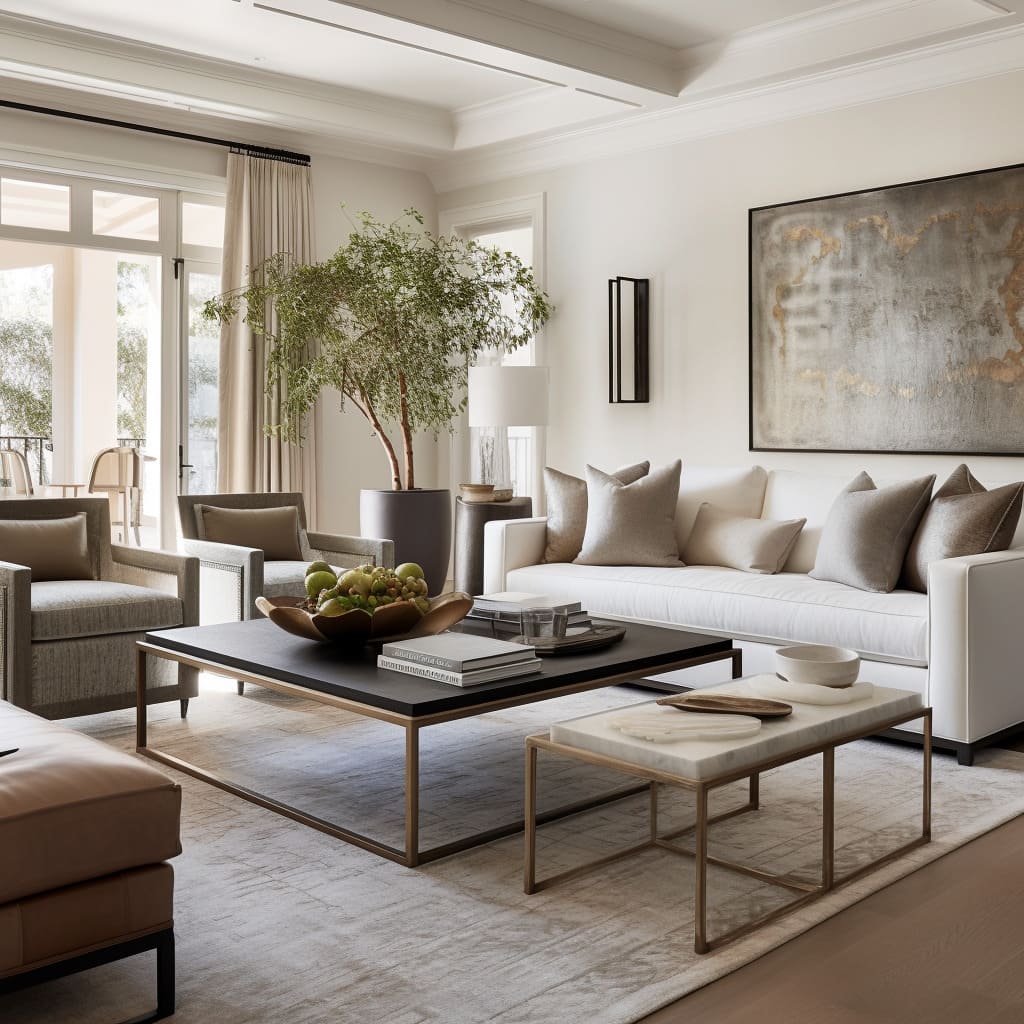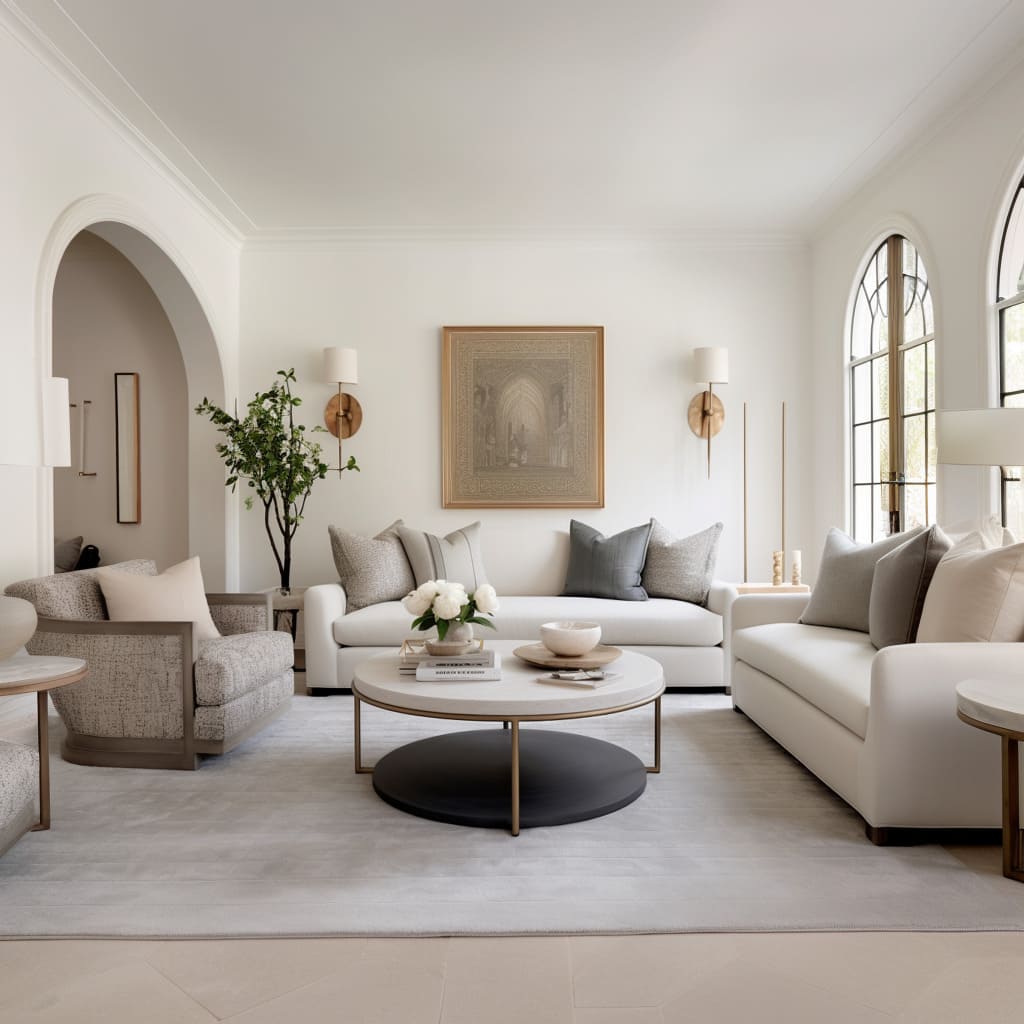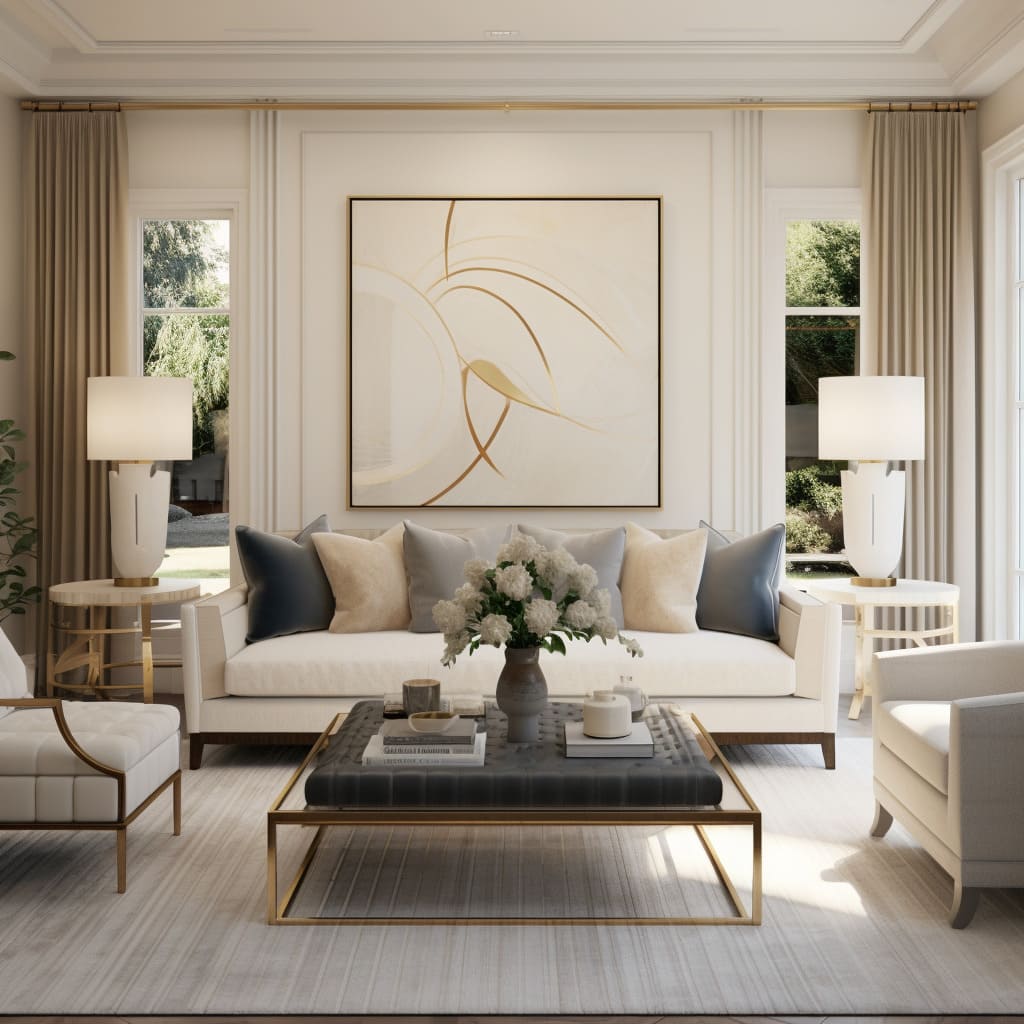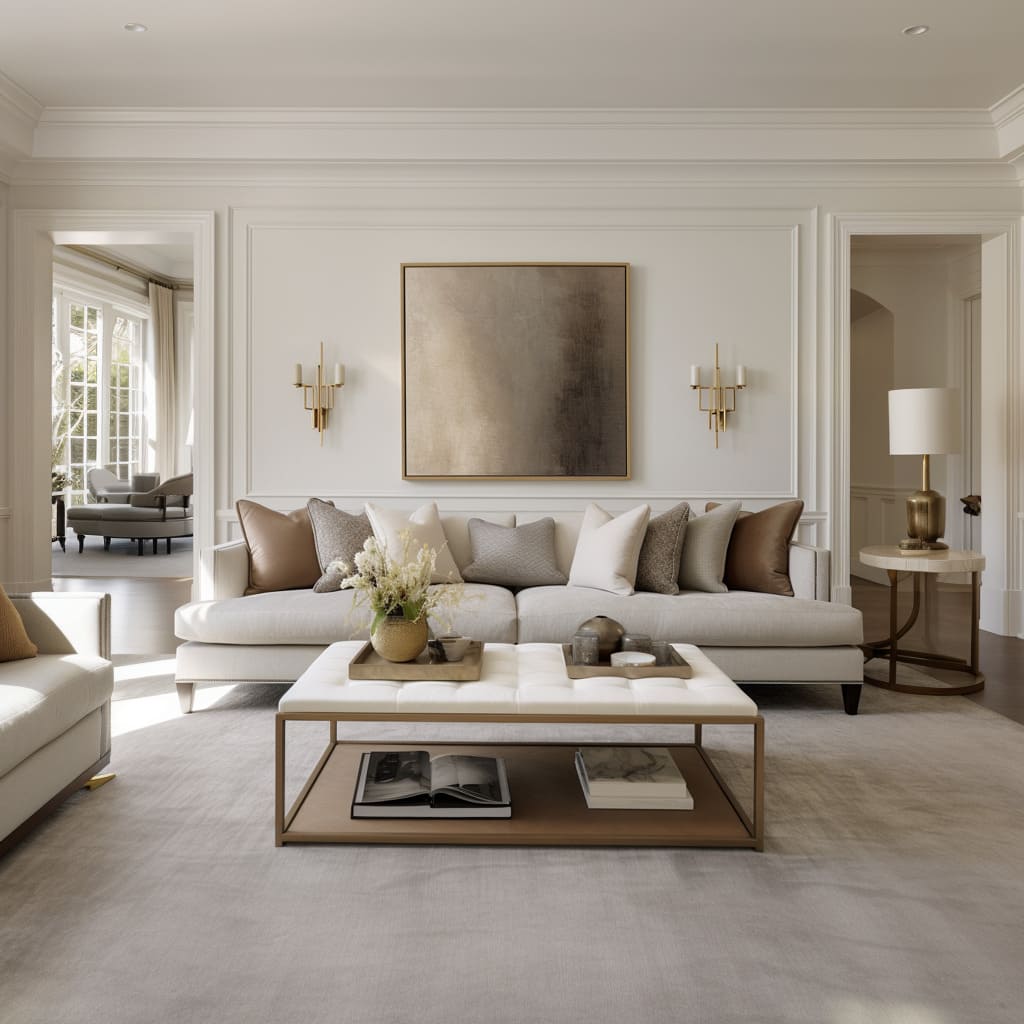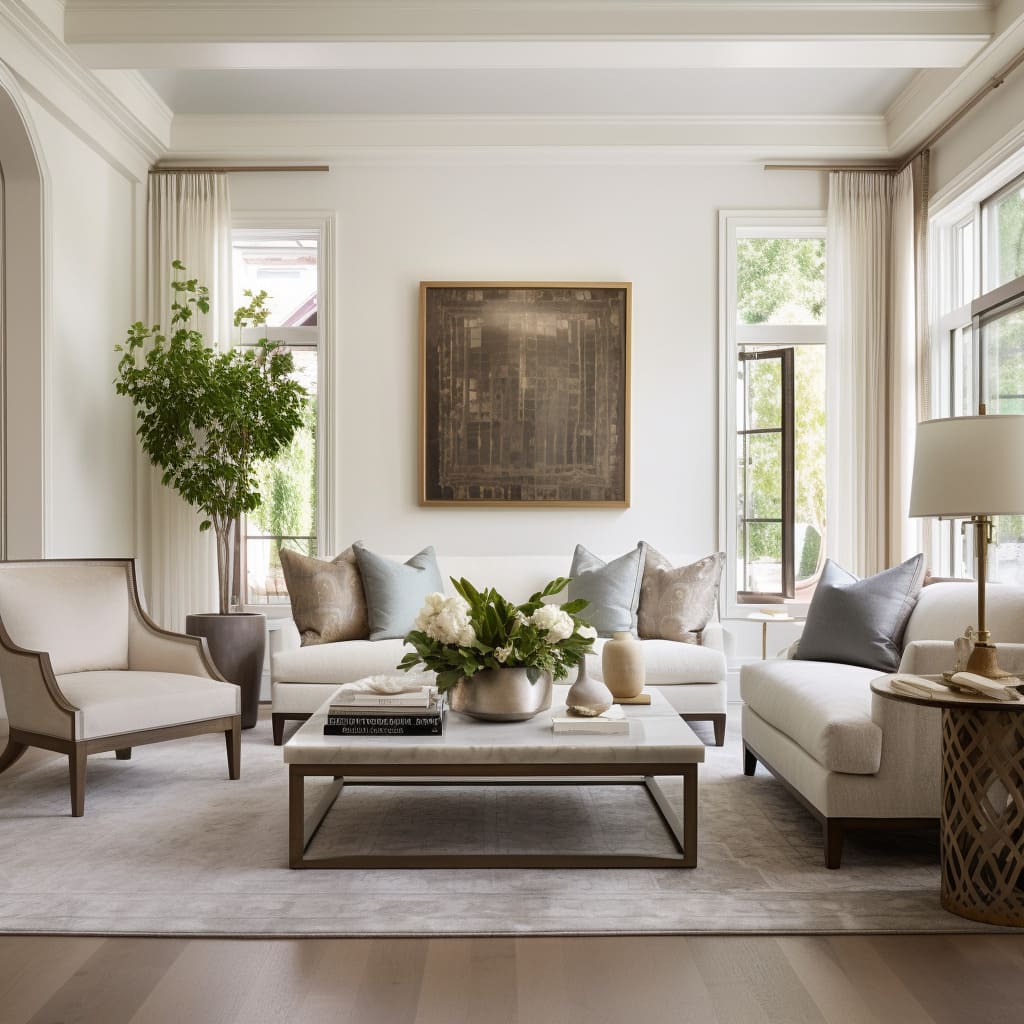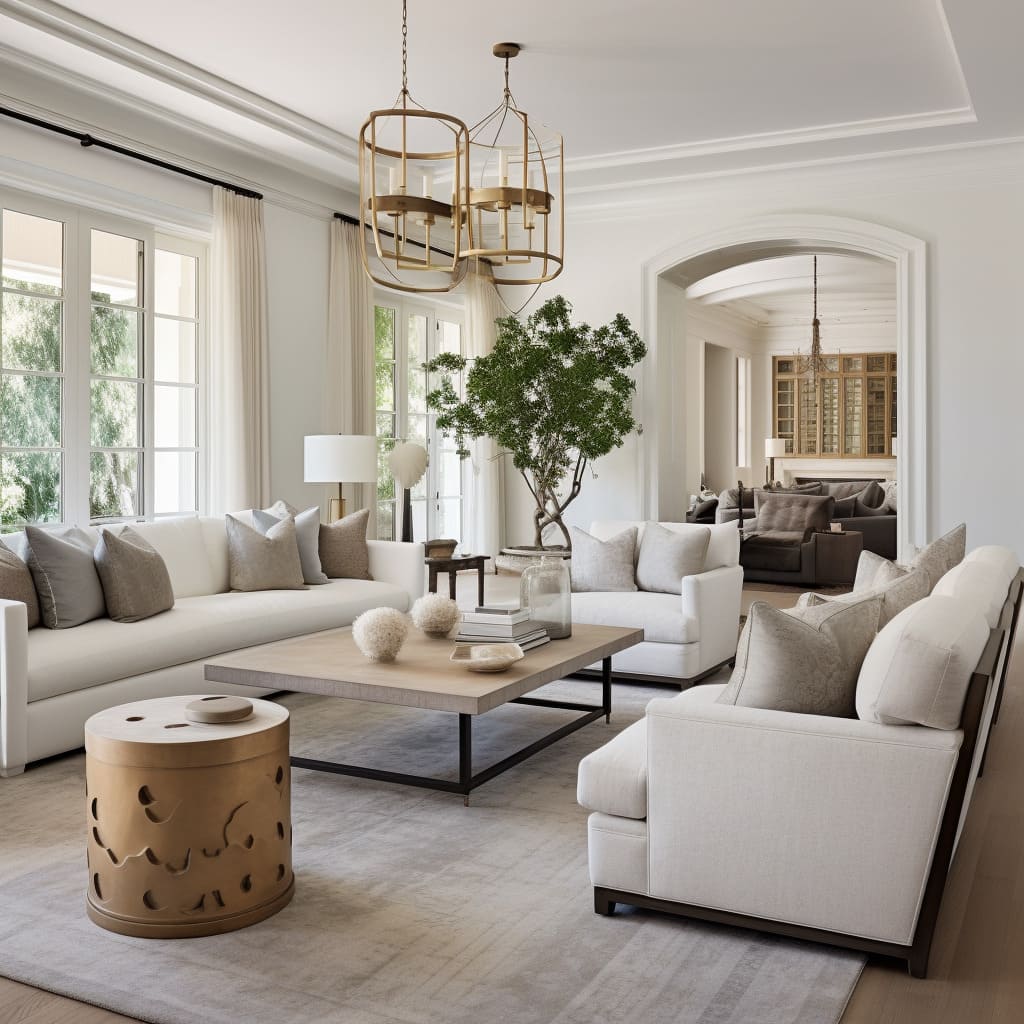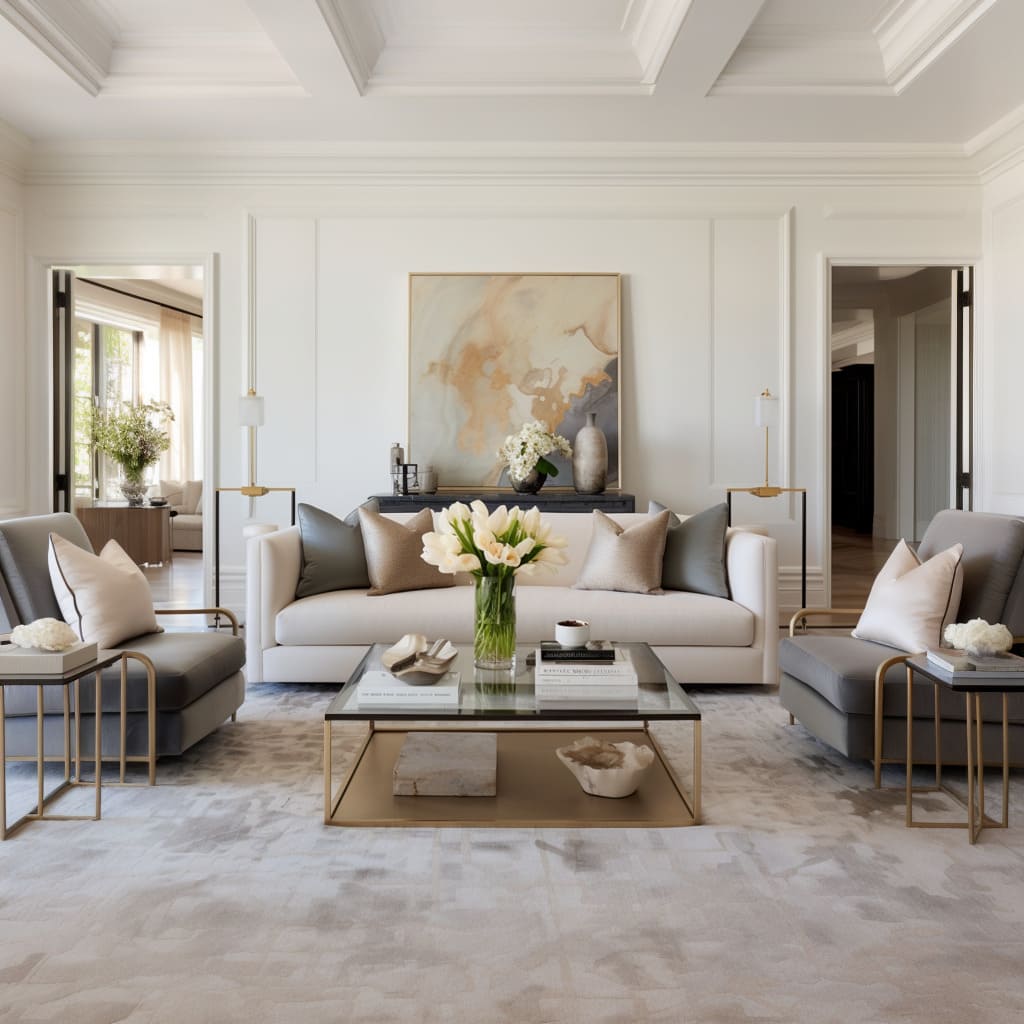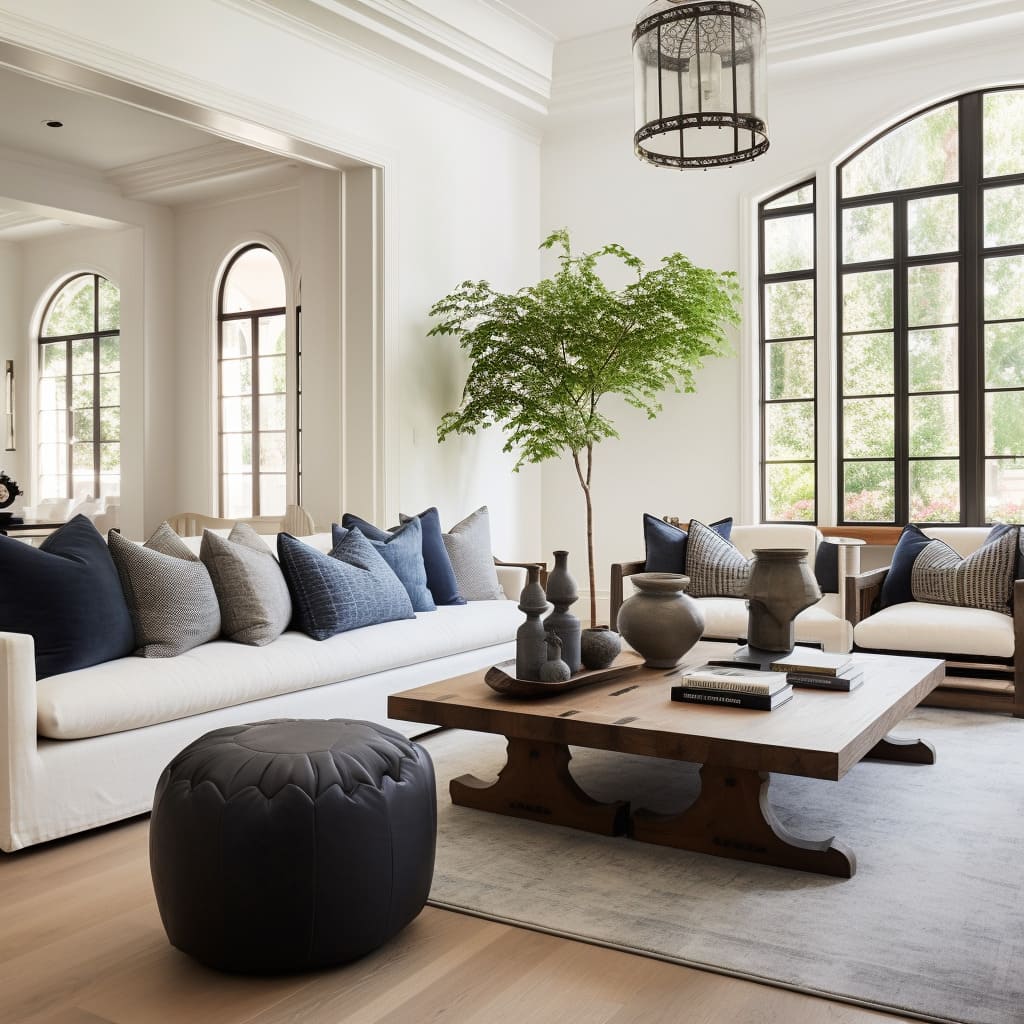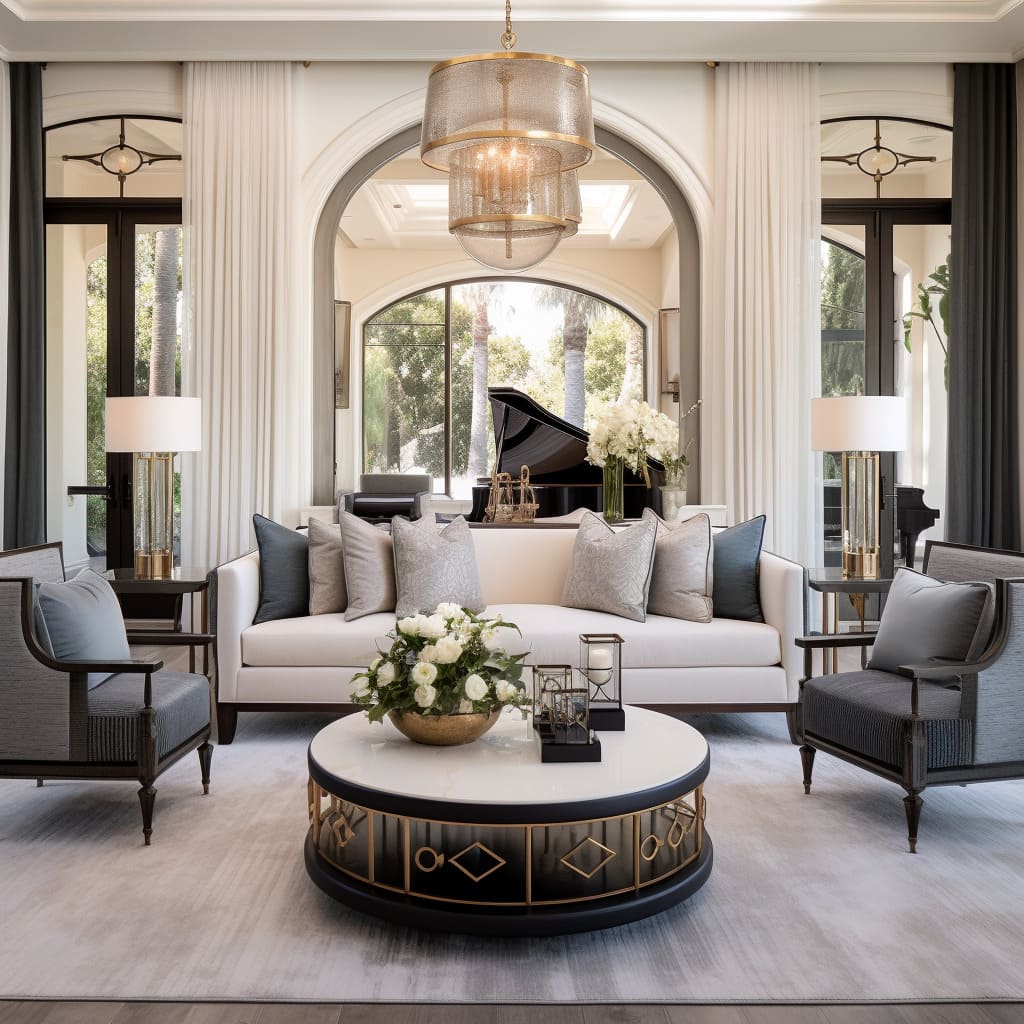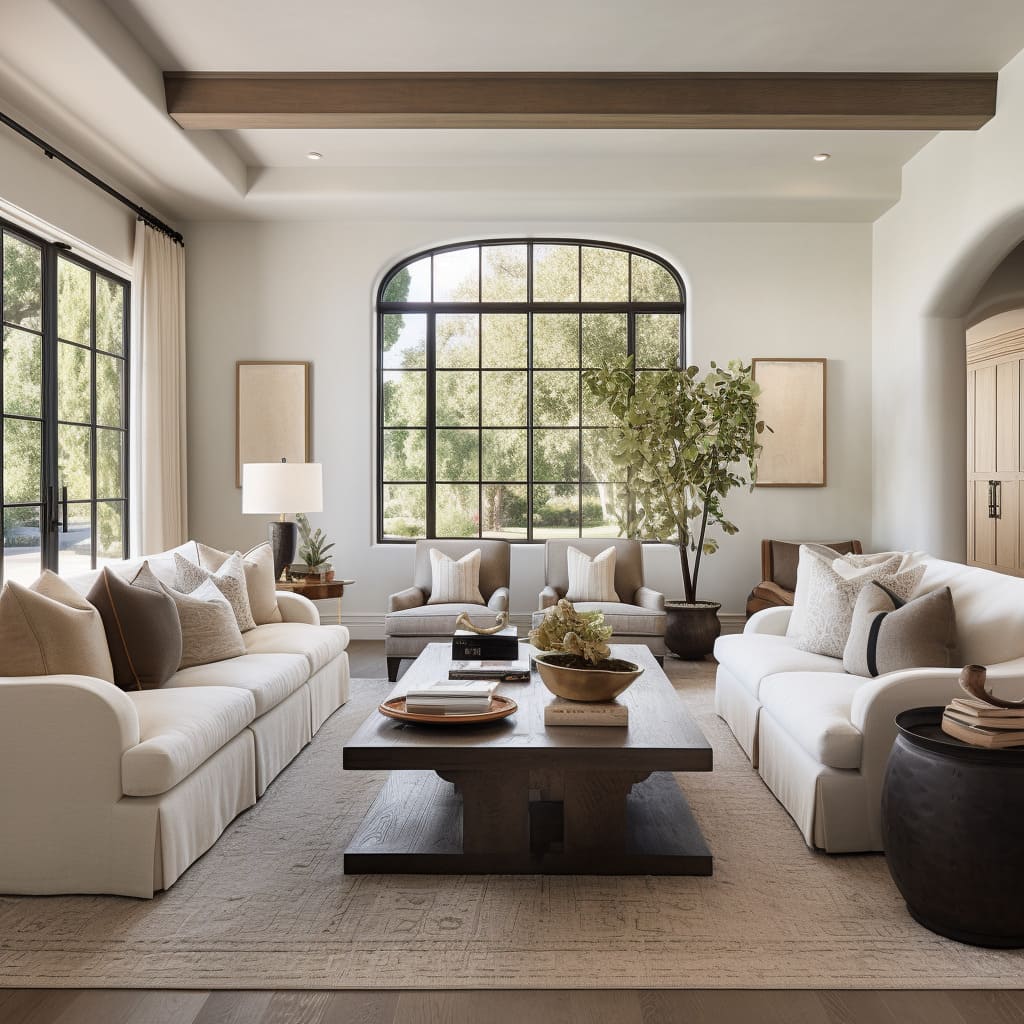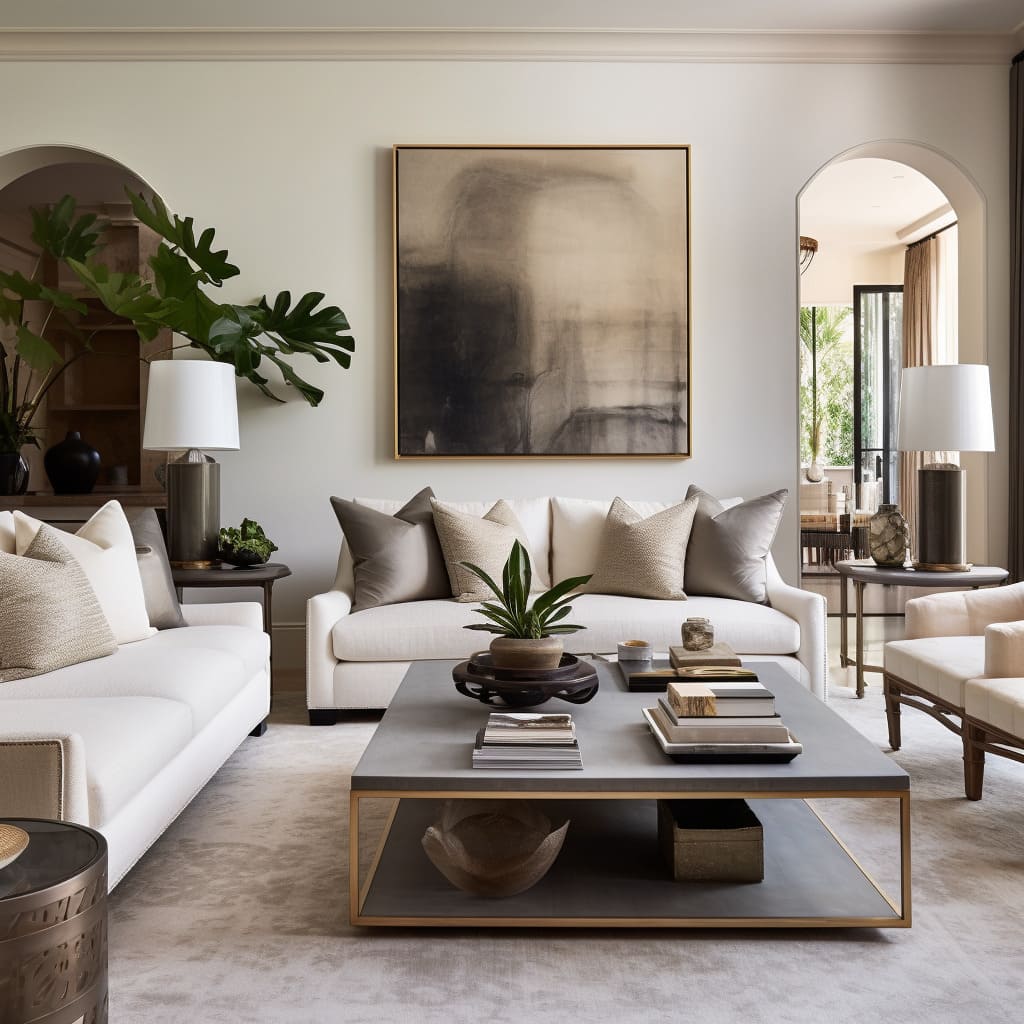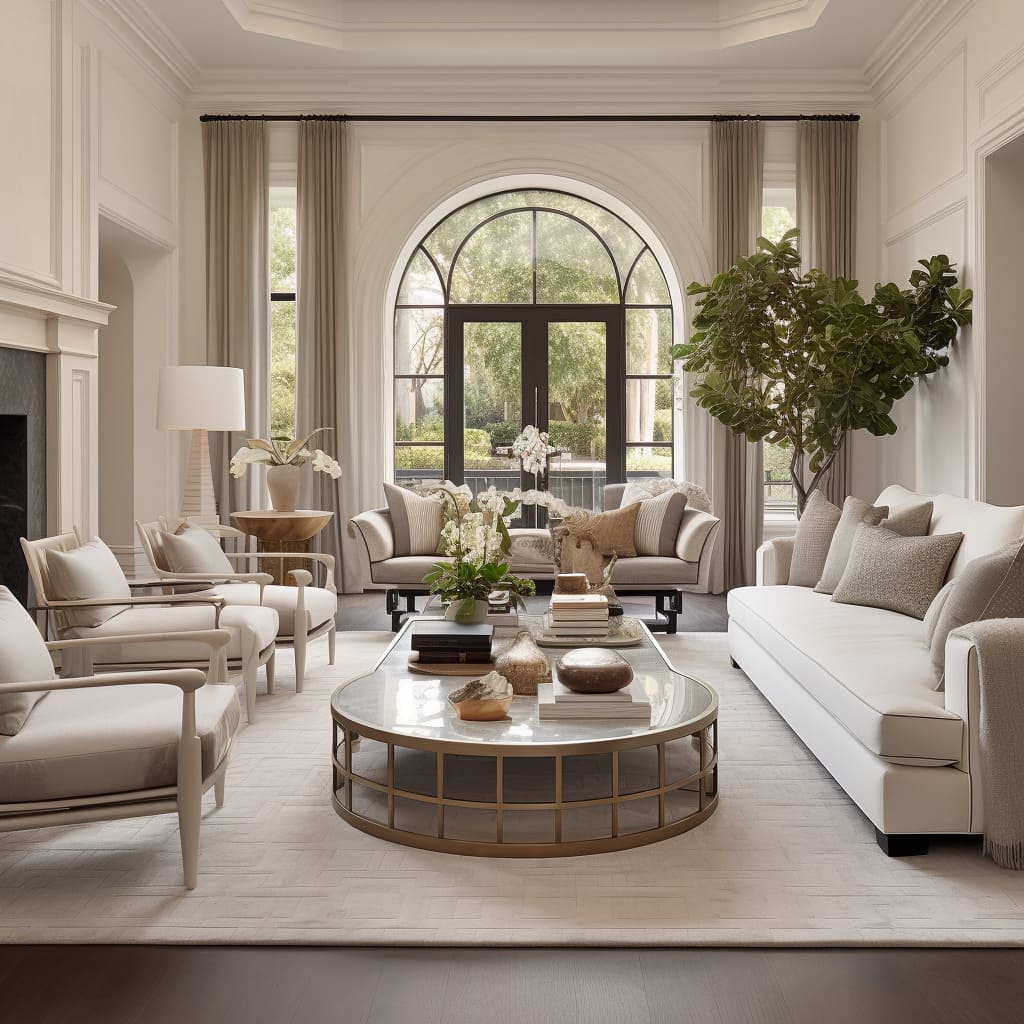Neutral Color Palettes
The magic of the transitional design lies in its clever use of neutral color palettes as the cornerstone of its aesthetic. Imagine a canvas painted with beiges, taupes, and creams; these shades form a warm and inviting base that bathes a room in light, acting as a foundation for the drama of texture and color to unfold.
his strategic approach allows for a decorating longevity where accessories can play a leading role in transforming the space over time. With such a color scheme, the introduction of vibrant accents becomes effortless, and the room can adapt to trends without losing its timeless appeal.
Think of it as a practical sartorial wardrobe, where the basics are versatile and enduring, allowing for a pop of color with a scarf or tie.
Furniture
When it comes to furniture, transitional design dances between the allure of the old and the crispness of the new. The key is to select pieces that are not only stylish but exude a sense of comfort.
Sofas should boast clean, sleek lines yet offer a welcoming, plush embrace—imagine a classic Chesterfield sofa stripped of its frills, leaving only the essence of its form. Wood furniture stands as a testament to time with simple, understated lines and a dark, lustrous finish, offering a visual and tactile contrast to the light, breezy fabrics that might adorn your upholstered items.
This marriage of design eras champions a smooth continuity that honors the past while celebrating the present.
Textures and Materials
In transitional interior spaces, the thoughtful interplay of textures and materials adds an indispensable layer of depth and warmth. Envision a coffee table topped with the cool elegance of marble, its geometric base lending a distinctly modern flair, sitting comfortably alongside a classical wooden console with rich, deep hues.
Textiles play a significant role as well; upholstery in varied textures like the subtle weave of linen or the plush softness of chenille adds an understated opulence, inviting touch and enhancing the multi-sensory experience of the space.
Lighting
The artful application of lighting can define the mood of a transitional room, providing both function and fashion. Imagine fixtures that blend the sleek lines of contemporary design with the warm finishes of traditional styles, such as a chandelier with a minimalist gold frame that bathes a room in a soft glow.
The goal is to curate a symphony of light through a layered approach that incorporates ambient, task, and accent lighting, creating a setting that’s adaptable for any occasion or time of day.
Art and Accessories
To encapsulate the transitional style within your own walls, begin with a neutral backdrop, allowing the architecture of your home and your chosen furnishings to speak for themselves. Blend the time-honored with the contemporary by selecting pieces that reflect both ends of the design spectrum.
Prioritize quality and longevity in materials, seeking out the likes of solid wood, robust metals, and luxurious marble.
Illuminate your spaces with a variety of lighting options, combining practicality with aesthetic appeal. Embrace minimalism in your accessories, opting for a few well-chosen items that bring personality without clutter.
Don’t underestimate the power of texture; use rugs, pillows, and fabric to introduce a tactile dimension that invites relaxation.
Achieving Transitional Style in Your Home
Illuminate your spaces with a variety of lighting options, combining practicality with aesthetic appeal. Embrace minimalism in your accessories, opting for a few well-chosen items that bring personality without clutter.
Don’t underestimate the power of texture; use rugs, pillows, and fabric to introduce a tactile dimension that invites relaxation.
Checklist for Crafting a Transitional Style Living Room
- Choose a Neutral Palette for Walls and Large Pieces: Select shades such as ivory, taupe, or soft gray for your living room walls to create a versatile backdrop.
- Incorporate a Mix of Furniture Styles: Pick out sofas and armchairs that draw from both modern and classical design influences.
- Invest in High-Quality Materials: Look for furniture and decor made from durable materials like hardwood, stainless steel, and marble.
- Layer Different Types of Lighting: Use a mix of overhead, accent, and task lighting to enhance the room’s functionality and ambiance.
- Select Simple, Impactful Accessories: Choose fewer decorative items, but make sure each one has a purpose and adds to the room’s overall design.
- Add Textures for Comfort: Introduce various textures through throw pillows, blankets, and area rugs to create a cozy atmosphere.
- Balance Old and New in Decor: Blend contemporary art with classic frames or modern sculptures with traditional shelving.
- Choose Functional Window Treatments: Opt for curtains or blinds that offer both privacy and light control, complementing the room’s color scheme.
- Pick a Statement Piece: Whether it’s a unique coffee table or a standout piece of art, have one element that draws attention and conversation.
- Keep Room Layout Open and Inviting: Arrange furniture to promote easy conversation and movement, reflecting the transitional style’s focus on comfort and practicality.
Transitional vs. Modern Style
Transitional style stands in contrast to modern design by tempering the latter’s stark, clean lines with a warmer, more inviting aesthetic. Where modern design prides itself on its adherence to simplicity, functionality, and the “less is more” mantra, transitional style introduces a touch of classic comfort.
It welcomes the sleekness of modern materials like glass and steel but softens them with the plushness of traditional upholstery and rich wood tones. While modern design often showcases a monochromatic or cool color palette and prefers a minimalistic approach to furnishings, transitional spaces use a mix of neutral tones to create a cozier, more balanced environment.
Transitional vs. Classical
When comparing transitional to classical style, one can observe a discernible shift from the ornate and decorative to a more understated elegance. Classical design is steeped in detail, from intricate moldings and richly patterned fabrics to heavy furniture and a deep, often jewel-toned color scheme.
In contrast, the transitional style simplifies these elements. It favors a lighter palette, less intricate detailing, and a more restrained approach to decor.
While classical interiors might showcase elaborate chandeliers and plush, heavy draperies, transitional rooms would opt for simpler light fixtures and window treatments that allow natural light to enhance the sense of space and openness.
Transitional vs. Minimalist
Transitional and minimalist styles both celebrate uncluttered spaces but diverge significantly in their approach to design elements. Minimalism is the epitome of simplicity, often employing a monochromatic color scheme, spartan furnishings, and a strict less-is-more philosophy.
It is characterized by an almost ascetic aesthetic, where everything in the room has a purpose and nothing is superfluous.
In contrast, the transitional style adopts a more pragmatic approach that allows for greater warmth and comfort. It embraces a neutral color palette, but one that’s layered and varied in shades and textures.
Transitional design also allows for more decorative and functional items in the space, providing a level of coziness and personalization that minimalism often eschews.
Materials and Details
In transitional design, the selection of materials is not just about aesthetics but also about creating a coherent narrative within the space. The choice of each element, from the plushness of a sofa’s cushions to the metallic sheen of a lamp base, contributes to an overarching sense of balance and refinement.
Luxurious marbles, enduring metals, and warm woods must all serve the design’s intent to harmonize the old with the new, ensuring a seamless flow that speaks to both comfort and elegance. The attention to these details is what elevates a transitional space, rendering it both functional and visually captivating.
Detail Selection Checklist
- Evaluate Sofa Options: Ensure cushion plushness for comfort while maintaining sleek design lines.
- Choose Wood with Care: Select wood pieces that offer warmth with their color and grain.
- Consider Metal Accents: Look for metallic touches that provide contemporary sheen without excess.
- Opt for Marble Surfaces: Invest in marble tops for tables that blend luxury with clean, modern lines.
- Balance Old and New: Pick each item to bridge traditional and contemporary styles cohesively.
- Assess Textiles: Choose fabrics that add texture and comfort to seating and window treatments.
- Review Lighting Fixtures: Ensure lamp bases and fixture materials contribute to a unified aesthetic.
- Check Rugs and Throws: Use these accessories to add layers of texture and subtle color contrasts.
- Verify Hardware Finishes: Select knobs, handles, and pulls that complement both wood and metal elements.
- Confirm Art and Decor: Pick pieces that speak to the room’s narrative without disrupting the tranquil vibe.
- Inspect Upholstery Quality: Look for high-quality textiles that promise durability and timeless appeal.
- Harmonize Accessory Materials: Coordinate vases, frames, and bookends to the room’s metallic and wood tones.
- Double-Check Comfort Elements: Ensure that functional items like cushions and throws also serve the style palette.
- Scrutinize Construction Details: Furniture and decor should not only look good but be well-built and sturdy.
- Finalize with a Designer’s Eye: Review your choices to guarantee they create the desired narrative of sophisticated balance.
Why Transitional Style Reigns in the USA
Transitional style has cemented its popularity in the USA for its ability to bridge the gap between new and old, appealing to a nation’s love for both innovation and tradition.
American homes frequently feature classic architectural details such as crown moldings and wainscoting, which lend themselves beautifully to the transitional aesthetic. Moreover, the American ideal of home is one that exudes comfort without sacrificing elegance, a principle that lies at the heart of transitional design.
Global Appeal of Transitional Design
Globally, transitional design has found its place in countries and regions that gravitate towards subtlety and adaptability in their interiors. It appeals to diverse cultures that appreciate the harmonious blending of history with modernity, where homes can reflect a sense of heritage while keeping pace with contemporary life.
Transitional design has become a universal language in interior decor, offering a versatile template that can be interpreted through various cultural lenses, making it as relevant in a Parisian apartment as it is in a New York loft.
Transitional style is the art of balancing, making it perfect for those who appreciate the harmony between elegant and comfortable living. It’s a style that respects the past while embracing the present, creating spaces that are not only beautiful but also deeply satisfying to live in.
With its neutral palettes, thoughtful mix of materials, and timeless appeal, transitional design continues to capture hearts across the USA and beyond.

